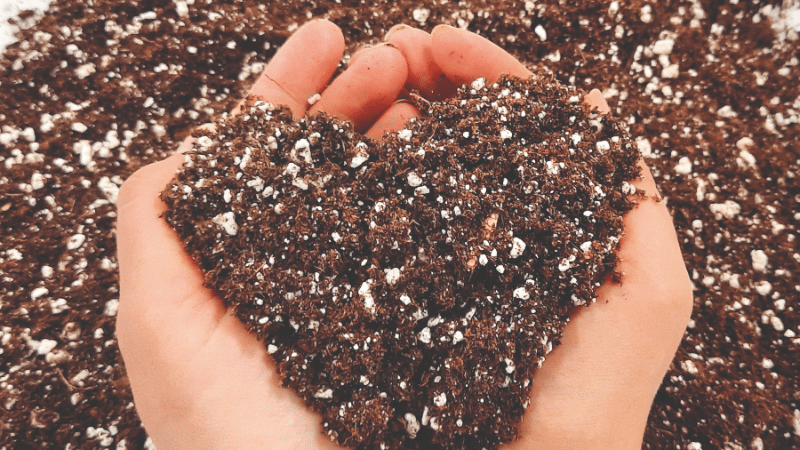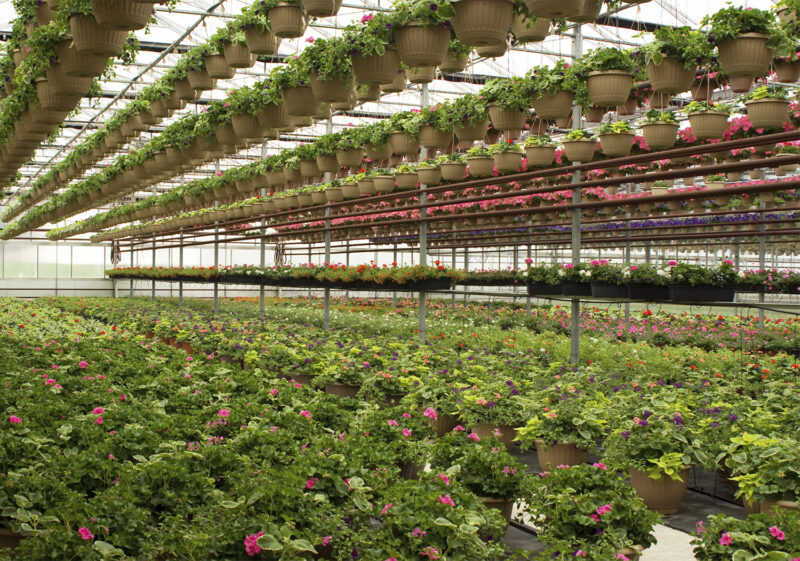
Growing media 101
All growing media are not created equal. Water holding capacity, nutrient contents, and important considerations like pH and electrical conductivity (EC) will vary. It’s also important to consider the full list of contents within a growing medium.
I recently had an in-depth discussion with Ed Bloodnick, director of grower services at Premier Tech, to ask the big questions about picking the best growing media for greenhouse operations. Here’s what he had to say.
GPN: Can you explain the importance of choosing the right medium for different crops?
Ed Bloodnick: Growers want what is going to provide the best results, and manufacturers want growers to have great success. Choosing the wrong growing medium could be disastrous; it requires additional crop management. If crops underperform, even the retail customers that buy their plants will not be happy because some of the same problems that show up in the greenhouse can spill over to the consumer — problems like crops being weak with poor overall health or hanging baskets that dry out too often.
The first thing to beware of is low-priced products. Generally, quality products are made with quality ingredients, often resulting in a higher selling price because you’re buying better quality. Low-priced products can be cutting corners somehow to get in the market or may not have the same stringent quality requirements for the ingredients that they add. If you buy quality, then you’re going to have quality final products.
Supply chain issues have been a struggle in the past few years for some companies because some components are coming from overseas, and there is limited production and employment. There have been a lot of checks and balances to try to be sure that the supply chain can fulfill the needs for the products that are on the market.
If you grow a wide variety of crops, you may require two or more different types of growing media, so it depends on what you’re doing at your greenhouse. Use a product that is quality-tested, uniform and predictable. I would say these are the three qualities that are most important for growers.

The growing experience and knowledge they gain this year could be applied to future crops and can be fine-tuned. That’s why it’s important to choose the right growing medium to start because it’s the basis for starting your crops for years to come.
GPN: What makes a great growing medium for greenhouse growers?
Bloodnick: It’s another hard question to answer because each grower has unique growing practices, media, crops are different, the type of container makes a difference; all of those have an impact.
If you look at growing media overall, it provides the four basic needs to grow plants: it’s the anchorage for the plant, the water-holding reservoir, the nutrient exchange environment and a gas exchange site for plant roots.
Plant roots have to give off CO2 and take up oxygen in the root zone, so if it holds too much water, that could inhibit growth. The main characteristics growers should look for are physical characteristics like bulk density or weight, water-holding capacity and air porosity, which is the inverse of water-holding. If the air porosity is very low, you can have some asphyxiation of root systems and plants grow slower. If it’s too high, you may have to water all the time and possibly increase workload for growers. What’s great for one person may not be great for another grower.
Chemical characteristics need to be looked at, too: the pH, electrical conductivity (EC) and the actual nutrient content itself. The majority of commercial growing media have a starter nutrient package in it to help plants get acclimated — it’s not to grow a crop, and I think most growers know that. Knowing what those nutrients are is helpful to growers because some, like germination media, obviously have a lower EC, a lower nutrient content, than general transplant media, where you’re taking larger plants and putting them into a container, so it’s important to know all that.
Growers need to consider the crop type, stage of plant development, container type and crop duration. The same growing medium in different size pots will change the amount of water it holds. Short, wide pots hold more water because they have a bigger saturation zone, while taller pots will dry out faster because gravity allows the water to drain faster. If you have very tall containers and you want to stay wet, you need a growing medium that has a higher water-holding capacity. If you’re using a shallow, wider container, you need something that has higher air porosity or lower water-holding capacity.
A great growing medium provides uniformity, consistency and predictability — but it’s only part of the growing equation. The grower needs to consider water quality, fertilizer type and growing environment. It’s important to realize that the growing medium doesn’t grow the plant, the grower does — it’s a tool. It plays an important role, but growers have to control inputs and the environment, such as irrigation frequency, temperature, and fertilizer applications, to get the best results. With any new products, growers should try them first to see how well it works for their particular situation before they go headfirst.
GPN: Can you explain more about how the right growing medium depends on what crops you’re growing?
Bloodnick: Absolutely. There are options for the different needs of growing. Germination medium is generally finer texture and has a lower fertilizer content and lower EC. General transplant medium is a coarser texture, with more fertilizer and a higher EC to help larger plants acclimate. Seedlings may not do well in a general transplant mix. If you’re growing organic crops, the growing media must be approved for organic use and has to carry the OMRI certification. The best way to select a growing medium for your crop is to speak to the manufacturer to understand the available options and each product’s intended use.
It’s so important to get samples and try it. We encourage our growers to get samples of the different products and do a demonstration side by side so you can understand how the product is going to work.

The consistency and uniformity of media components are really the most important. You want to know that, “I bought this product last year, I used it, it worked this way, and I want it to work the same way this year.” Also, make sure the product has a quality assurance program. Ask questions about the ingredients: “How is the product made?” “What are the specifications?” “’Should it be stored a certain way?”
GPN: Anything new in growing media that growers should know about?
Bloodnick: In the last few years, there’s been a lot of introduction of wood fiber, biochar, mineral wood, processed fiber from cow manure, ground corn cobs, processed hemp fiber … the list goes on. These may be helpful to reduce the cost of some of the ingredients, but each can present new management challenges for growers. Still, sphagnum peat moss, partially composted pine bark and coconut coir continue to be the main organic-based components for growing media. Perlite still remains the main standard aggregate ingredient. A big change in the last year is that horticulture-grade vermiculite has really become scarce on the world market. We had to omit it from our products. It became extremely expensive and very hard to find good quality.
There are some ingredients, like vermiculite, that are available from other countries, but they’re not approved for horticulture use. There are also questions about heavy metals as well as asbestos fibers in it. Everything we had before was coming from a place that was certified asbestos and heavy metal free, so when the mine closed we looked for other places to get it, and it just was not available. So unfortunately, vermiculite has now become a thing of the past for the growing media market. Some of the changes we’ve seen with the supply chain — there has been a lot more scrambling and figuring out how to keep costs down.
Even when wood fiber was introduced, it was marketed as a replacement for perlite because it became so expensive. Well, you can’t use an organic ingredient to replace a mineral ingredient; they don’t work the same way. But it was a lot cheaper for growers to look at wood fiber. Some growers tried it; some loved it, some hated it.
In research, there are some new things for different types of growing media related to edible crops in controlled environmental agriculture (CEA). It’s much different than conventional growing systems because they’re growing in different types of systems and containers. These operations are food-producing factories, with crops packaged at their facility and going to your table with many of the packages saying, “Ready to eat.” Because of this, producers have strict requirements. They’re looking at products that are free of heavy metals and they’re concerned about human pathogens, things like salmonella, E. coli and listeria. These operations are using all next-generation growing media that are for specialized applications.
For an enhanced reading experience, view this article in our digital edition by clicking here.


 Video Library
Video Library 




















